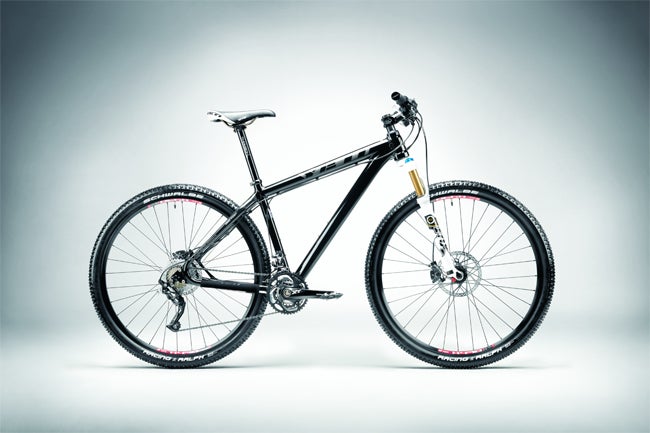Is Bigger Better for Mountain Bikes?

Remember the fat-ski revolution? It might be time to say hello to the mountain-bike revolution. The hot new design in mountain bikes is 29-inch wheels. Bike geeks call them “29ers,” to differentiate them from the standard 26-inch-wheels on traditional mountain bikes.
29ers started rolling into the mainstream scene about two years ago when big-name brands like Giant began featuring them in storefront windows. Originally designed for tall riders and gear-heads, word got out that the larger wheels made riding over rocky terrain easier for just about everyone. Now 29ers are sold in almost every bike shop, with major brands, including Trek and Specialized, jumping in. Similarly, when fat skis became mainstream nearly a decade ago, every skier wanted a pair. Once people saw how well wide-waist skis performed in powder—and all over the mountain—they began to dominate the market. The new wider skis made you a better skier. Demand sky rocketed. Will 29ers do to mountain biking what wide skis did to skiing?
“29ers offer greater stability, smoother roll over, and better traction,” says Chuck Gartrell, sales manager at Full Cycle Bikes in Boulder, Colo. “If you take a 29er and a 26-inch bike down the same trail, the 29er will give you a smoother ride because the tires absorb more turbulence than the 26-inch tires.”
The bigger wheels give you more confidence on technical terrain and decrease the sensation that you’re going to flip over the handlebars when you hit a rock, he says. Like the use of fat skis in tough terrain, 29ers lead average bikers to trails that they would deem too difficult on a bike with 26-inch tires.
But a cushier rides doesn’t sit well with everyone. Some riders, those who tend to be experienced and aggressive, seek the challenge that 29ers can eliminate. “They’re not as snappy as a 26ers on technical terrain,” says professional downhill racer Joey Schusler. “I don’t see them being used in downhill races because they’re not aggressive enough.”
While ease of use is a major player in the argument for 29ers, some complain that they compromise maneuverability. “The fat tire can make switchbacks or really tight singletrack problematic,” says Chris Conroy, president and general manager at Yeti Cycles in Golden, Colo. “They can feel heavier and slower on steeper terrain because of more rotating mass and a larger diameter.”
Whether or not your wheels are big enough to roll over rocks or agile enough to move around them, the use of 29ers versus traditional-sized mountain bike tires boils down to rider preference—for now.
“People will buy the bike that bets fits their skill level,” Conroy says. “29ers aren’t going to dominate the market because they’re not the right match for everyone.”
Big wheels may never be the norm but they’re gaining in popularity, especially with intermediate riders. “Customers used to come into the shop not knowing what a 29er was so I’d have to explain the details and urge them to test ride one,” Gartrell says. “Now, people come into the shop on the hunt for a big-wheeled bike.”
In 2009, 29ers accounted for approximately five percent of all mountain bikes sold in specialty shops. Last year, that number jumped to 23 percent, according to JJ Rudd, an analyst from Leisure Trends Group, a consumer research firm in Boulder, Colo.
If the big-wheel craze is anything like the trend to buy fat skis, it won’t be disappearing anytime soon. “29ers give you the ability to float over the trail like fat skis do over powder,” Gartrell says. “They’re going to be a mainstay in biking.”